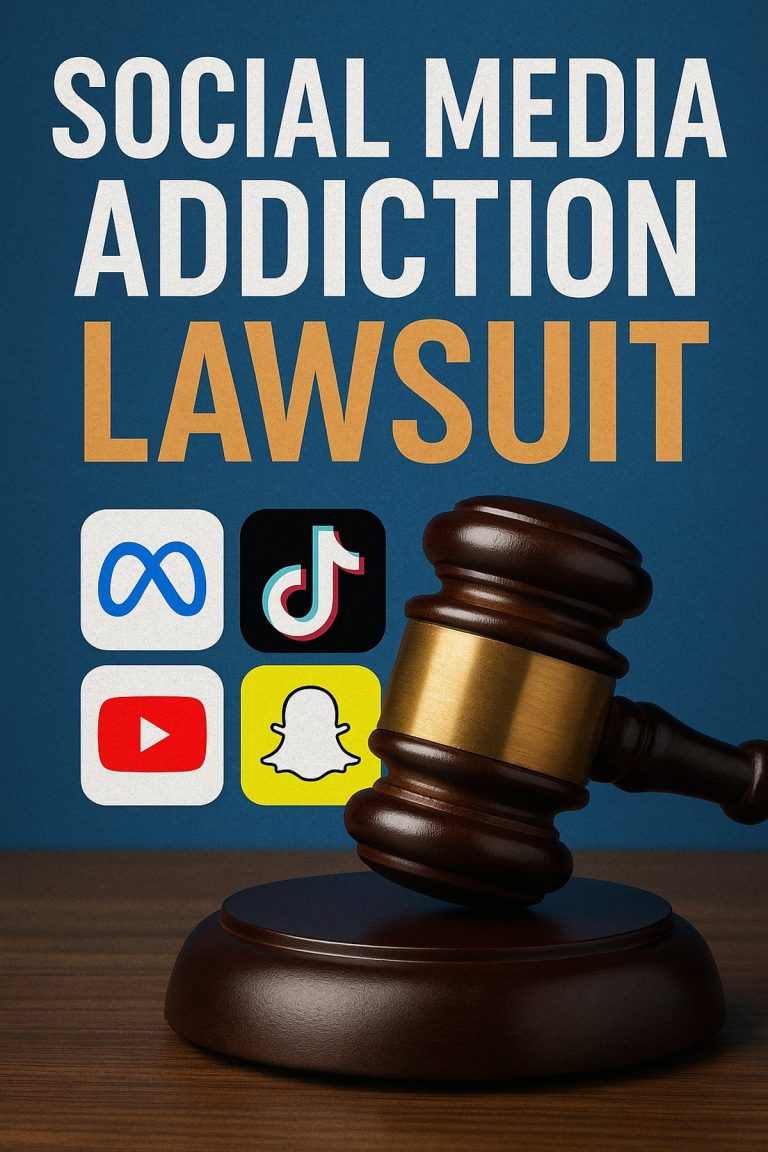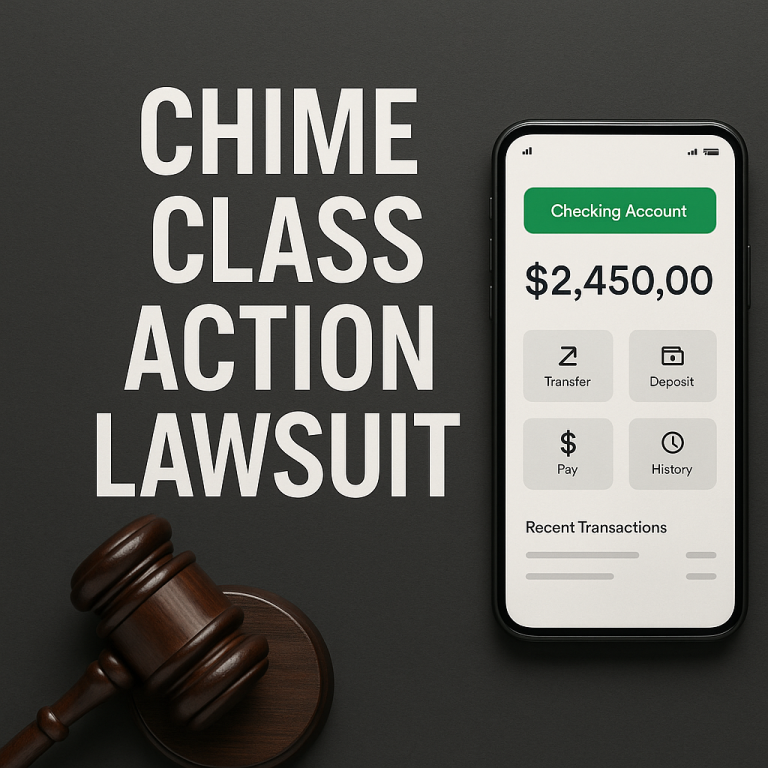The Innovasis lawsuit highlights a complex legal battle where ethics, finances, and healthcare intersect. At its core, the case alleges that a spine device manufacturer made illegal payments to influence how doctors treat their patients. The DOJ claims that Innovasis paid doctors to use its spine implant products, and those payments led some physicians to perform procedures that were unnecessary or based on financial interest rather than patient need.
In June 2024, the United States Department of Justice filed a lawsuit against Innovasis Inc. and several doctors. The charges include violations of federal laws that prohibit kickbacks and false claims in Medicare-funded procedures. This article explains every aspect of the case in clear terms. It breaks down the allegations, identifies the parties, and shows what’s at stake for you and for healthcare in the United States.
What Is the Innovasis Lawsuit About?
To understand the full scope of the Innovasis case, we first need to look at how it began, the types of payments involved, and how those payments influenced medical decisions.
Background of the Lawsuit
This case began when a former Innovasis employee came forward. They had inside information. They submitted a complaint under the False Claims Act, a law that rewards whistleblowers who report fraud.
The whistleblower shared internal emails, spreadsheets, and payment logs. These records showed doctors getting large checks labeled as “consulting fees.” But there were no detailed reports or work outputs to justify these fees. The documents showed that doctors who used more Innovasis products got paid more money. When doctors stopped using Innovasis implants, their payments slowed down or stopped entirely.
That triggered an investigation. The DOJ found what it called a clear pattern of fraud. Doctors received perks and money tied directly to their use of Innovasis spinal implants.
Nature of the Alleged Kickbacks
Doctors received payments as rewards for using Innovasis implants. The DOJ states they didn’t get paid to consult—they got paid to perform procedures using one company’s products. These rewards weren’t limited to money. Innovasis offered flights, hotel stays, expensive dinners, and access to exclusive social events.
Innovasis arranged luxury vacations disguised as business trips for some doctors. They gave others speaking roles at conferences that had no audience. The company labeled some doctors as consultants, even though they signed no contracts, held no meetings, and produced no work. DOJ investigators say Innovasis designed these arrangements to look like regular business activities.
The DOJ claims Innovasis used sales tracking reports to monitor each doctor’s implant usage. When usage dropped, they reduced or canceled payments. When it increased, they renewed contracts or added bonuses. This pattern, the DOJ argues, proves that Innovasis paid doctors not for insight, but for product loyalty.
How Did Innovasis Allegedly Violate Federal Laws?
Now that the kickback allegations are clear, it’s important to examine how Innovasis’s actions may have violated specific federal statutes.
Anti-Kickback Statute
The Anti-Kickback Statute bans giving anything of value to induce referrals for products paid by Medicare or Medicaid. In this case, doctors allegedly received thousands of dollars per month just for using Innovasis devices.
Let’s say a doctor performs 30 surgeries in a month using Innovasis implants. If that doctor receives a check from the company shortly after, the DOJ sees that as evidence of a bribe. This law exists to stop money from influencing medical decisions. The DOJ says Innovasis ignored this law repeatedly.
False Claims Act
This law targets anyone who knowingly submits false or misleading bills to the federal government. The DOJ says that when doctors performed surgeries using Innovasis implants because of kickbacks—and then billed Medicare—they were submitting false claims. That means Medicare may have paid millions for procedures that were tainted by illegal payments. The DOJ is trying to recover those funds.
Pattern of Violations
This wasn’t a one-time incident. The DOJ says it went on from 2016 to 2023. It involved dozens of physicians and thousands of surgeries. The payments were structured to look legal. But behind the scenes, internal records show Innovasis knew exactly what it was doing.
How Much Money Was Involved?
Understanding the scale of this case requires looking at how much money exchanged hands and how it affected doctor behavior and Medicare billing.
Payment Summary
The DOJ complaint provides exact numbers for some doctors:
- Dr. Brian May received over $950,000 in total payments.
- Dr. William Thorell received more than $1.1 million.
- Other doctors, still unnamed, received amounts that remain confidential.
Innovasis made these payments over several years. The company linked each payment to how many surgeries the doctor performed using its implants.
Usage Rates and Reimbursements
According to billing records, both doctors performed hundreds of surgeries each year. Each surgery brought in tens of thousands of dollars through Medicare. Many used only Innovasis implants. That pattern raised alarms.
| Physician Name | Alleged Kickbacks (USD) | Surgeries Using Innovasis |
|---|---|---|
| Dr. Brian May | $950,000+ | 400+ |
| Dr. William Thorell | $1.1 million | 500+ |
| Other Surgeons | Confidential | N/A |
These numbers suggest a clear link between how much money doctors received and how often they used Innovasis products.
Who Are the Doctors Involved?
The lawsuit names specific physicians who received large payments. Let’s explore who they are and what role they played in this case.
Named Physicians
The two most prominent names in the lawsuit are Dr. Brian May and Dr. William Thorell. They worked in high-volume spine clinics and hospitals. They had long-standing relationships with Innovasis and were among the top recipients of “consulting” fees.
Confidential Co-Defendants
Other doctors are mentioned but not named. The DOJ may name them later. In similar cases, names often come out in later court filings or settlements. These doctors may face discipline from medical boards.
What Role Did Whistleblowers Play?
Behind many healthcare fraud cases are individuals who come forward. In this case, a whistleblower played a key role in uncovering the scheme.
How the Case Was Uncovered
This lawsuit started because a former employee of Innovasis chose to speak up. They saw the payment patterns. They kept records. Then they filed a confidential complaint under the False Claims Act. The whistleblower gave the DOJ access to contracts, calendars, and internal messages. These documents showed that payments were linked to product use. Not work, not research, not advice.
Whistleblower Rights
Under federal law, the whistleblower could receive up to 30% of any money recovered. That can be millions of dollars. This law helps uncover fraud and protect patients.
What Happens Next in Court?
The legal process is still unfolding. Here’s what we know about the next steps and what might happen as the case progresses.
Trial or Settlement?
The case is now in discovery. That means both sides are exchanging evidence. Depositions will follow. If there’s no settlement, the case will go to trial.
Past kickback cases often settle. But if this one reaches court, it could expose more internal records and lead to wider industry changes.
Possible Outcomes
- Innovasis could pay a large fine.
- Doctors could lose their medical licenses.
- Hospitals may be required to refund Medicare.
This case may shape future compliance rules for all device manufacturers.
How Is the Medical Device Industry Responding?
This lawsuit has triggered reviews and policy changes across the medical device industry. Let’s look at how companies and hospitals are reacting.
Internal Audits
Companies like Medtronic, Stryker, and Zimmer have begun reviewing their contracts. They’re checking to make sure all payments are documented and legal.
Hospital Reactions
Hospitals have started asking surgeons to declare every financial relationship they have with suppliers. Some are requiring disclosures in patient charts.
Broader Impact
Trade associations are calling for clearer rules. Compliance officers are pushing for stronger training. This lawsuit has sent a strong message.
Has This Happened Before?
The Innovasis case is not the first of its kind. To understand its significance, it helps to compare it with other similar legal cases.
Yes. There are many similar cases.
- In 2022, Medtronic paid $50 million to settle a kickback case.
- In 2018, DePuy Synthes paid $9.75 million for illegal payments.
- In 2017, Orthofix International paid $6 million for sham consulting contracts.
All of these companies denied wrongdoing. But they paid to end the cases. And all agreed to tighten compliance.
What Are the Legal and Ethical Implications?
Beyond the courtroom, this lawsuit brings up broader concerns about patient safety and trust in medical care. Let’s explore the potential consequences.
Legal Risks
Violating the Anti-Kickback Statute is a crime. Violating the False Claims Act brings huge civil penalties. Doctors could face federal prosecution. Federal agencies could ban them from participating in Medicare. Hospitals may also face serious consequences. If they failed to question or monitor the surgeries, they may have to repay Medicare for every improperly billed procedure.
Ethical Failures
When doctors accept money tied to product use, patients suffer. They can’t trust the care they’re getting. That breaks the core promise of medicine. This case is a wake-up call. Ethics must come first. Every doctor must disclose all payments. Every hospital must enforce clear rules.
What Impact Does This Have on Healthcare?
The effects of this case go beyond Innovasis. They touch on trust, cost, and the need for reform across the healthcare system.
Trust and Transparency
When patients feel like they’re part of a sales pitch, trust disappears. This case proves that transparency matters. You need to know if your surgeon is getting paid.
Cost to Taxpayers
Kickback-driven surgeries waste public funds because doctors perform procedures that aren’t medically necessary. Medicare must spend money on real care, not rewards-motivated treatments. Not on fraud.
Systemic Reform
This case may push Congress to update disclosure laws. More audits. More databases. Stronger fines. That’s what it takes to rebuild public confidence.
What Can Patients and Policymakers Learn?
There are valuable takeaways here for both patients and lawmakers. Understanding how to protect yourself and improve the system is essential.
For Patients
Ask your doctor: “Do you get paid by the company that makes this device?” If you’re not sure, check the Open Payments database online. It’s free. Request copies of your procedure records. Look for brand names. Ask why those devices were chosen. If the answers are vague, consider a second opinion.
For Policymakers
Support stronger whistleblower protections. Fund more oversight. Require real-time payment disclosures. Make it easier for patients to know who’s being paid—and why.
FAQs About the Innovasis Lawsuit
What is the Innovasis lawsuit about?
Innovasis is accused of paying doctors to use its spinal implants.
Who filed the Innovasis lawsuit?
A whistleblower filed it. The DOJ later joined.
Which doctors are involved?
The lawsuit identifies Dr. Brian May and Dr. William Thorell as two key figures.
What laws did they break?
The Anti-Kickback Statute and the False Claims Act.
What happens if they’re found guilty?
They could face fines, loss of licenses, or even jail.
What can patients do?
Use the CMS Open Payments tool to see if your doctor took money from a company.
Has the case gone to trial?
Not yet. It’s still in the early court stages.
Does this affect other companies?
Yes. Other medical device firms are reviewing their practices now.
Conclusion
The Innovasis lawsuit isn’t just a legal battle. It’s a warning. Patients deserve honest care. They deserve decisions based on health—not dollars. Doctors who take payments tied to treatments must be held accountable. Companies that offer bribes must face the consequences. This case could shape the future of medical ethics. And that future starts with transparency, integrity, and action. You have a right to trust your doctor. Let’s protect that right.




